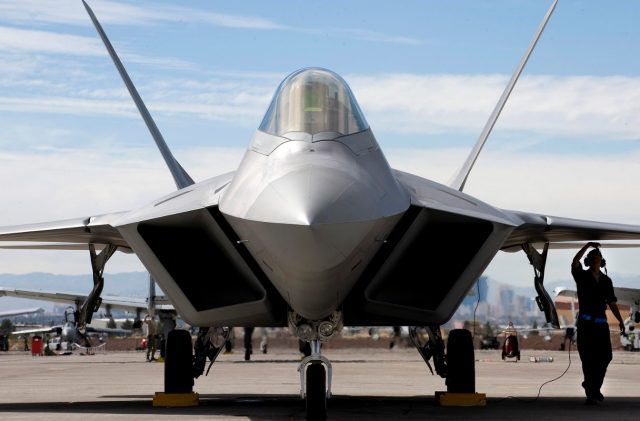Sloppy maintenance work was determined to be the main reason for the overheating of an F-22A Raptor aircraft at Nellis Air Force Base, Nevada, in October 2020, according to a recently-released Accident Investigation Board (AIB) report.
On October 30, 2020, at approximately 09:30 local time, the F-22A, tail number 06-4109, experienced an overheat condition in the auxiliary power unit (APU) exhaust bay that resulted in $2.69 million in damages to the airframe.
The AIB president found that the cause of the mishap was improper maintenance procedures resulting in the start of the APU while the unit’s mixing exhaust duct was removed. Among the factors factors that substantially contributed to the accident were the culture of the mishap unit, including limited use of circuit breaker collars and inconsistent use of warnings; the design of test instrumentation on the aircraft which obscured access to applicable circuit breakers; the extensive nature of the aircraft’s modification; and the distractions caused by several non-standard events scheduled on the day of the mishap, the report found.
The accident took place after the Raptor underwent an extensive modification to prepare for operational test missions.
On October 28 2020, to facilitate troubleshooting of the modification, the APU mixing exhaust duct was removed, during which time applicable circuit breakers were not pulled and collared, and warnings were not applied to the aircraft’s structure or the digital forms. The report further said these errors were not corrected by the on-scene supervisor.
Two days later, on October 30, the damaged Raptor required defueling and reconfiguration of the aircraft doors via aerospace ground equipment (AGE), but a decision was made to use the APU instead.
On the day of the mishap, the APU emergency-off switch (AES) was incorrectly set to “Normal” by an unknown person, the AIB investigation found.
During pre-procedural checks, a maintenance team member failed to recognize during his review of the aircraft forms and via visual inspection that AMED installation was required before APU operations. After start of the APU, smoke began emanating from the APU exhaust bay and into the left main landing gear wheel well. The maintainer delayed emergency APU shutdown in order to review the digital forms for fault reporting codes (errors). However, another maintainer in the vicinity rushed to the aircraft and set the AES to “Emergency Off,” shutting down the APU manually.
The entire report with other contributing factors to the accident, such as the visit of former National Security Adviser Robert O’Brien to the base on the day of the mishap, is available here



























